SBOS839M March 2017 – December 2024 TLV9061 , TLV9062 , TLV9064
PRODMIX
- 1
- 1 Features
- 2 Applications
- 3 Description
- Device Comparison Table
- 4 Pin Configuration and Functions
-
5 Specifications
- 5.1 Absolute Maximum Ratings
- 5.2 ESD Ratings
- 5.3 Recommended Operating Conditions
- 5.4 Thermal Information: TLV9061
- 5.5 Thermal Information: TLV9061S
- 5.6 Thermal Information: TLV9062
- 5.7 Thermal Information: TLV9062S
- 5.8 Thermal Information: TLV9064
- 5.9 Thermal Information: TLV9064S
- 5.10 Electrical Characteristics
- 5.11 Typical Characteristics
- 6 Detailed Description
- 7 Application and Implementation
- 8 Device and Documentation Support
- 9 Revision History
- 10Mechanical, Packaging, and Orderable Information
Package Options
Mechanical Data (Package|Pins)
Thermal pad, mechanical data (Package|Pins)
- DPW|5
Orderable Information
5.11 Typical Characteristics
at TA = 25°C, VS = 5.5V, RL = 10kΩ connected to VS / 2, VCM = VS / 2, and VOUT = VS / 2 (unless otherwise noted)



| VS = 1.8V to 5.5V | ||

| RL = 2kΩ | ||
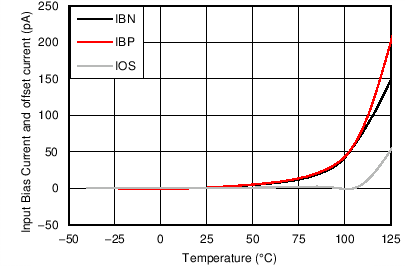


| VCM = (V–) – 0.1V to (V+) – 1.4V | ||
| TA= –40°C to 125°C | RL= 10kΩ | VS = 5.5V |
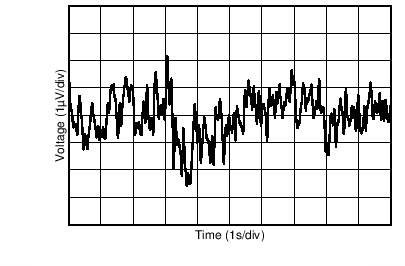
| VS = 1.8V to 5.5V | ||

| VS = 5.5V | VCM = 2.5V | RL = 2kΩ |
| VOUT = 0.5VRMS | BW = 80kHz | G = +1 |
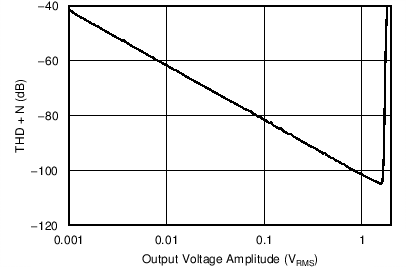
| VS = 5.5V | VCM = 2.5V | RL = 2kΩ |
| G = –1 | BW = 80kHz | f = 1kHz |


| V+ = 2.75V | V– = –2.75V | G = +1V/V |
| VOUT step = 100mVp-p | RL = 10kΩ |

| V+ = 2.75V | V– = –2.75V | |

| V+ = 2.75V | V– = –2.75V | G = 1V/V |


| PRF = –10dBm | ||

| VS = 5.5V | ||

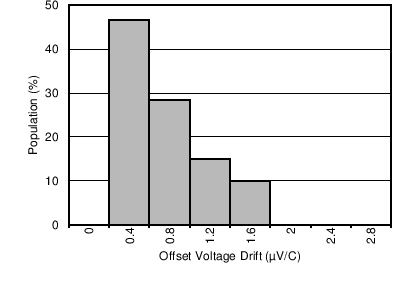
| TA = –40°C to 125°C | ||
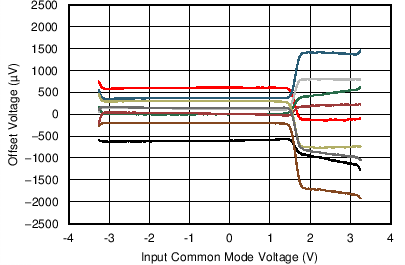
| V+ = 2.75V | V– = –2.75V |

| CL = 10pF | ||


| V+ = 2.75V | V– = –2.75V | |

| VS = 5.5V | VCM = –0.1V to 5.6V | TA= –40°C to 125°C |
| RL= 10kΩ |
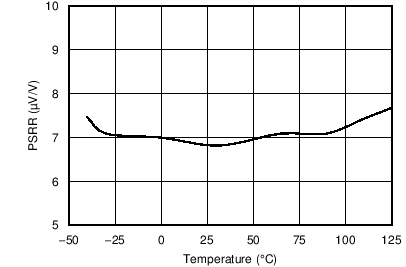
| VS = 1.8V to 5.5V | ||


| VS = 5.5V | RL = 2kΩ | G = +1 |
| VCM = 2.5V | BW = 80kHz | f = 1kHz |



| V+ = 2.75V | V– = –2.75V | G = –1V/V |
| VOUT step = 100mVp-p | RL = 10kΩ |
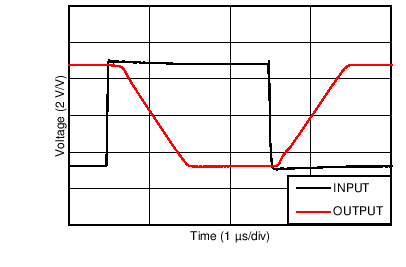
| V+ = 2.75V | V– = –2.75V | G = –10V/V |

| V+ = 2.75V | V– = –2.75V | CL = 100pF |
| G = 1V/V |
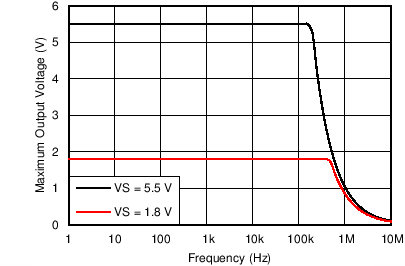
| RL = 10 kΩ | CL = 10pF | |

| V+ = 2.75V | V– = –2.75V | |

| VS = 5.5V | ||
